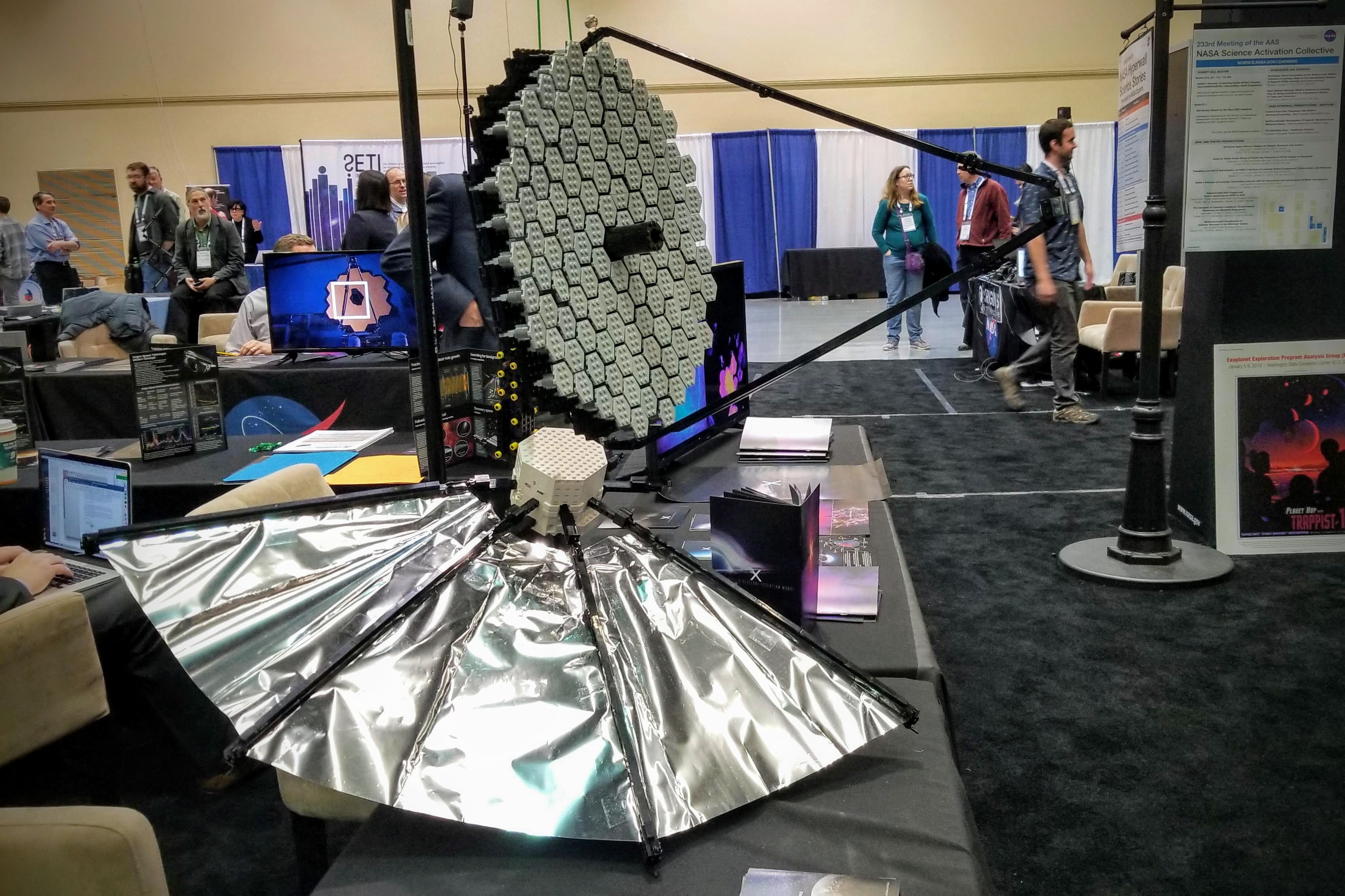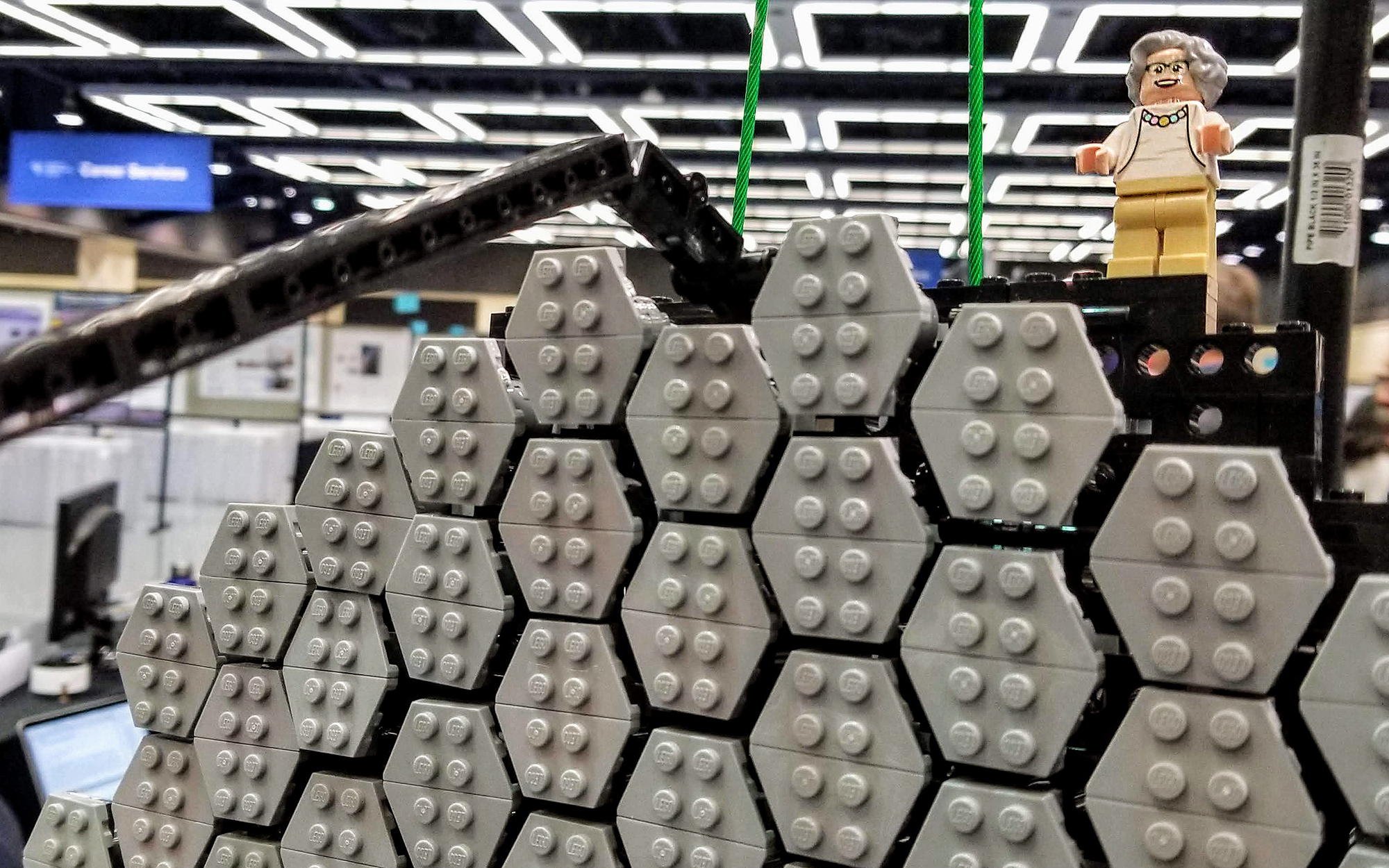Lego 'LUVOIR' Space Telescope Debuts at Astronomy Conference

SEATTLE — A Lego model of NASA's Large UV Optical Infrared Surveyor (LUVOIR), a proposed mission that could one day succeed the James Webb Space Telescope, has landed here at the 233rd meeting of the American Astronomical Society (AAS).
LUVOIR is one of four big astrophysics missions that NASA is thinking about launching in the mid-2030s. The homemade Lego space telescope was assembled by LUVOIR team member Christopher Stark, an astronomer with the Space Telescope Science Institute (STScI) in Baltimore, Maryland, who has worked on the proposal for the LUVOIR mission. He spent five months designing and building it in his home.
Constructed with about 4,200 pieces, the LUVOIR space telescope model has movable segments that tip, tilt and click into place in just the way the actual telescope would unfold in space after launch. [LEGO Space: Building the Future With Toy Bricks (Gallery)]
The Lego LUVOIR also has a fully deployable and stowable sunshade. The sunshade on the Lego model was too big to fit on the display table at NASA's booth here at AAS, so Stark had to remove half of it for the conference. "Even if this was completed around the other side, that would still only be half a sunshade," because the real sunshade would also have to extend even farther outward, Stark told Space.com.
"The scale is roughly 1 inch to 1 meter, so it's pretty close to scale with the minifigure" of the late Nancy Grace Roman, an astronomer known as the "Mother of Hubble," Stark said. Roman was about 5 feet tall, and it just so happened that the Lego minifigure was in the same proportion to the Lego LUVOIR as Roman would have been to the life-size telescope.

Stark said NASA's LUVOIR team was inspired by a Lego model of the Extremely Large Telescope, which was on display at a previous AAS meeting a few years ago. Even though Stark said he's "not really a Lego fanatic or anything," he ended up being in charge of the project.
He came up with a Lego LUVOIR schematic using special Lego design software, then ordered the specific pieces online. For some parts of the telescope, he abandoned the software and "built it on the fly," he said. Stark spent about $500 on Legos for the entire project and was left with about $100 worth of extra, unused pieces.
Get the Space.com Newsletter
Breaking space news, the latest updates on rocket launches, skywatching events and more!
Because the Lego LUVOIR is not entirely complete — its science instruments and half of its sunshield have not yet been built — perhaps Stark will be able to put a few of those spare pieces to use in the future. "I may work on the instruments a little bit if I can get the lead engineers to give me a schematic to show me what they look like," Stark said. "I will probably finish off the sunshade and eventually, I'll probably just hang it in my office."
But before he gives LUVOIR all its bells and whistles, Stark is working on a separate Lego project for NASA — a model of the James Webb Space Telescope.
Email Hanneke Weitering at hweitering@space.com or follow her @hannekescience. Follow us on Twitter @Spacedotcom and on Facebook. Original article on Space.com.
Join our Space Forums to keep talking space on the latest missions, night sky and more! And if you have a news tip, correction or comment, let us know at: community@space.com.

Hanneke Weitering is a multimedia journalist in the Pacific Northwest reporting on the future of aviation at FutureFlight.aero and Aviation International News and was previously the Editor for Spaceflight and Astronomy news here at Space.com. As an editor with over 10 years of experience in science journalism she has previously written for Scholastic Classroom Magazines, MedPage Today and The Joint Institute for Computational Sciences at Oak Ridge National Laboratory. After studying physics at the University of Tennessee in her hometown of Knoxville, she earned her graduate degree in Science, Health and Environmental Reporting (SHERP) from New York University. Hanneke joined the Space.com team in 2016 as a staff writer and producer, covering topics including spaceflight and astronomy. She currently lives in Seattle, home of the Space Needle, with her cat and two snakes. In her spare time, Hanneke enjoys exploring the Rocky Mountains, basking in nature and looking for dark skies to gaze at the cosmos.









